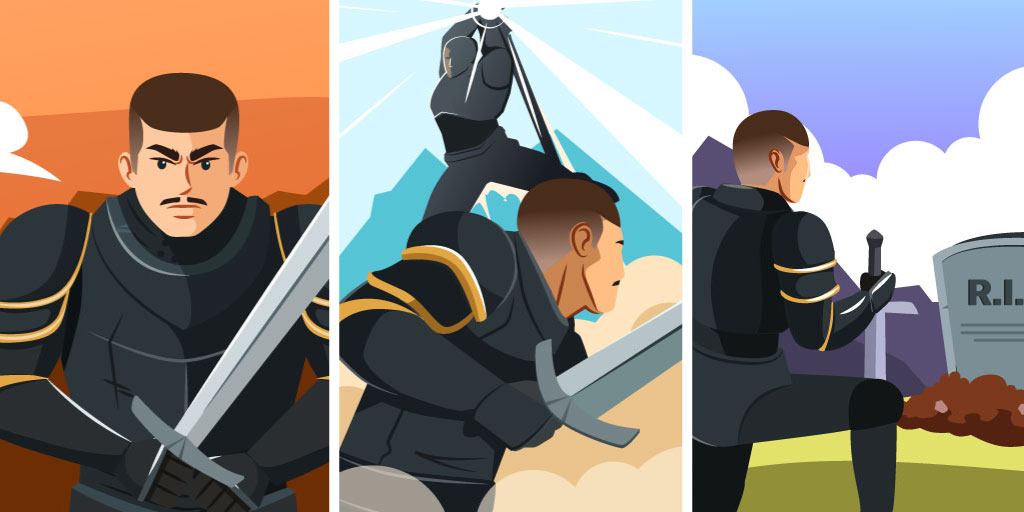Conflict is an essential component in any engaging story. But how do you write an intriguing conflict (or several) that keeps your readers’ eyes fixed on the page? First, we need to start by saying that there are two main types: internal vs external conflict. In this article, we will explore the differences between them and how to use them effectively both to drive your stories and to create powerful, emotional resonant narratives.
What is Conflict?
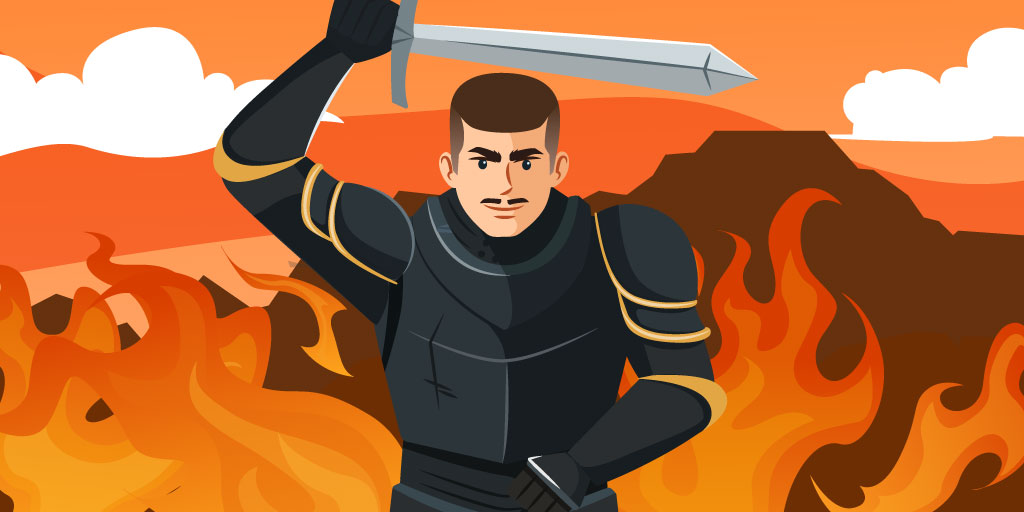
Conflict is a literary device that creates tension in a story. It involves a struggle that the characters undergo while trying to overcome obstacles, achieve their goals, or resolve their problems. It can arise from a variety of sources, including differences in beliefs, values, or desires, physical challenges, or external forces such as society, nature, or other characters.
A properly developed conflict drives the plot of a story forward, creates suspense and drama, and is what keeps readers engaged up to the end, looking forward to seeing it resolved.
Internal vs. External Conflict
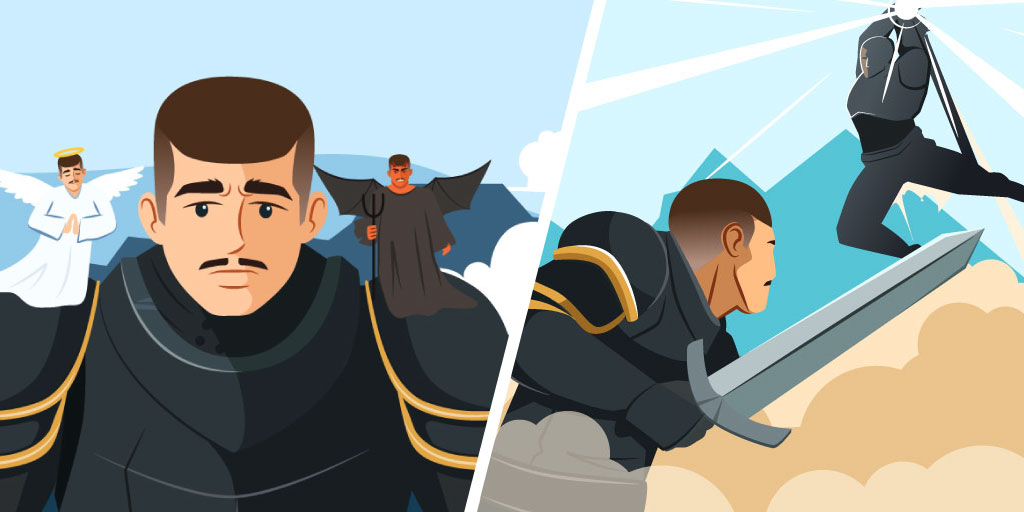
Internal conflict is a psychological struggle that takes place within a character’s mind. It involves a battle with their own opposing thoughts, emotions, beliefs, duties, and values, and can also arise from a clash between their desires, fears, or morals.
In contrast, external conflict occurs when a character struggles with an external source, such as human antagonists, society, nature, or physical obstacles. It involves their interactions with their environment.
While it is tempting to draw a sharp distinction between the two types, they are often interlinked. External challenges usually create turmoil in characters’ thoughts and emotions, while internal struggles determine their outlook on external events that may or may not become confrontations. Hence, internal conflict is a character’s battle with themselves, whilst external conflict is a battle with something outside themselves.
Let’s take a look at the key differences between internal conflict and external conflict in storytelling, and how they are presented in a story.
Internal Conflict | External Conflict |
|---|---|
Arises within the character’s mind | Arises from an external element |
Involves a psychological struggle | Involves a struggle between the character and their environment |
Subjective and not always visible to other characters | Objective and visible to other characters |
Explores the character’s inner world | Explores the character’s strengths and weaknesses through their actions |
Creates tension through the character’s thoughts and emotions | Creates tension through the character’s actions and reactions |
Character Development Quiz (Easy)
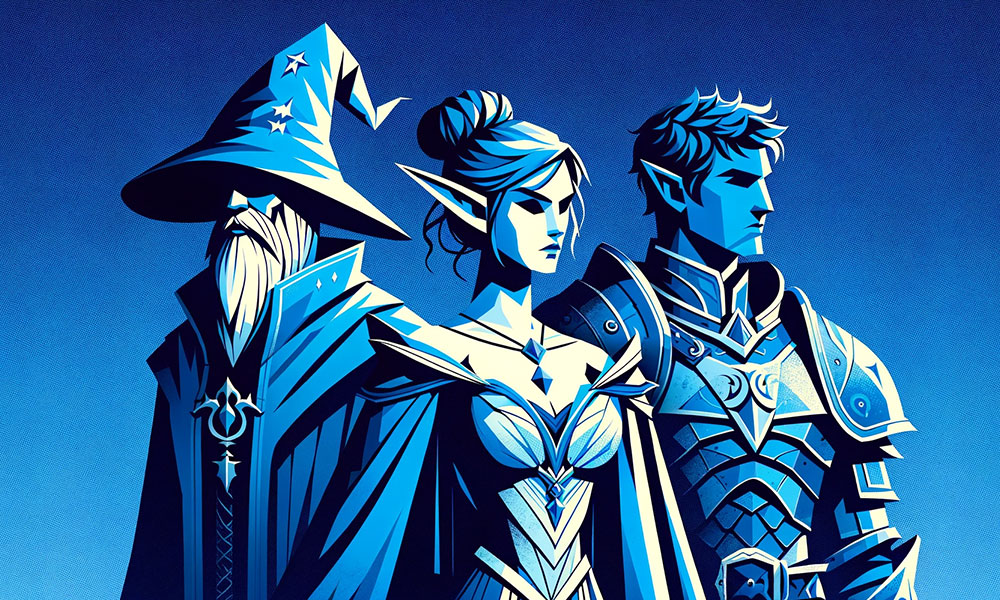
What is Internal Conflict?
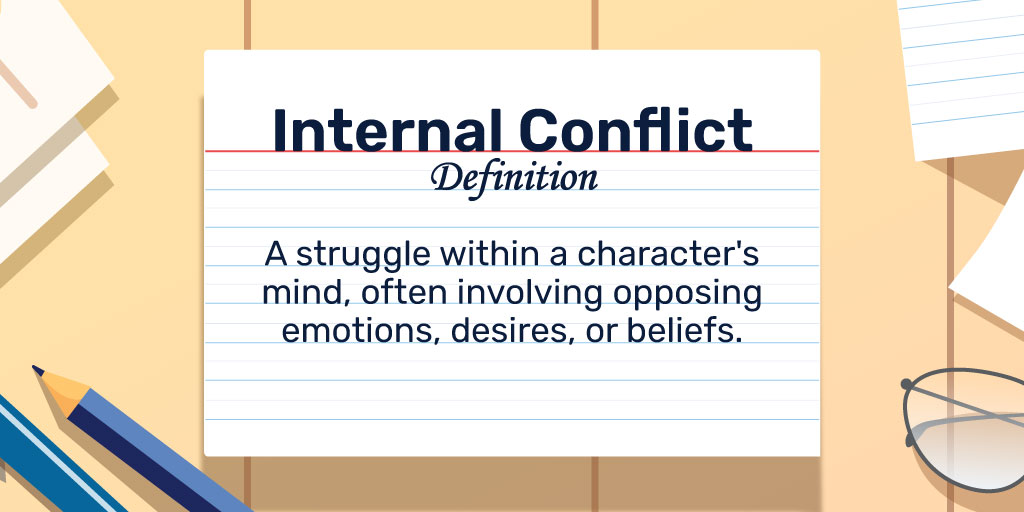
Internal conflict refers to a type of struggle that takes place within a character’s inner world. It is a psychological battle that they experience as they face inconsistencies in their beliefs, desires, feelings, duties, fears, or morals. Psychological problems like anxiety, depression, and a lack of control over emotions also give rise to conflict.
Types of Internal Conflict
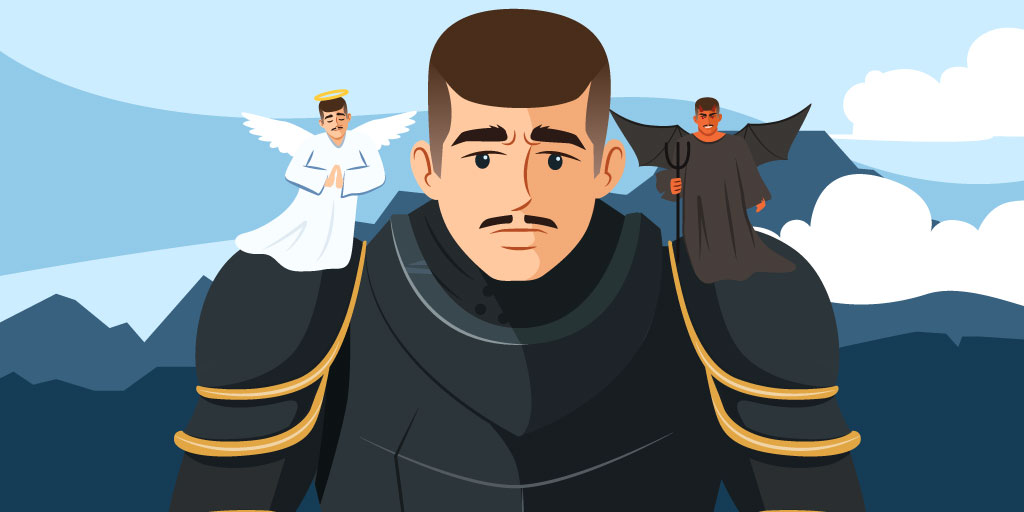
A character can go through experience different types of internal conflict. In the sections below, we will look at a few that you can use as inspiration for your own stories.
Decision-Making Conflict
This type of conflict occurs when a character is presented with a challenging decision, and they are torn between different possibilities that each has its advantages, disadvantages, risks, and rewards. Their pondering reveals the characters’ values, desires, motivations, and personalities.
Self-Doubt Conflict
A character will find themselves experiencing self-doubt when they lack confidence in their abilities, usefulness, or purpose. They may feel uncertain or like a fraud as they perform their duties. Characters for whom self-doubt is a trait might be risk-averse, especially in relationships, because they fear failure or rejection.
Emotional Conflict
The psychological struggle a character goes through while they are experiencing conflicting emotions is referred to as emotional conflict. For instance, they may feel a mixture of love and hate towards someone, or they may experience happiness and sadness simultaneously.
Fear Conflict
When a character battles a pervasive fear that limits their choices or actions, it is called a fear conflict. Perhaps they struggle to confront their fears, or maybe they avoid situations that trigger a phobia. It often stems from their past experiences or trauma, such as a traumatic event, childhood experiences, or cultural conditioning.
Identity Conflict
An identity conflict might arise when a character starts questioning their sense of self, their purpose, or their place in the world. Sometimes they grapple with their identity and struggle to define themselves. They could feel like they don’t belong or fit in with their community or society. This situation often flows from past experiences or cultural expectations.
Moral Conflict
When a character is forced to make a choice that contradicts their core beliefs and ideals, a moral conflict results. This can create a dilemma for them, as they may be torn between doing what is right and what is in their best interest. The process can reveal their values, beliefs, priorities, personalities, and motivations.
Guilt Conflict
A guilt conflict arises when a character feels remorseful or ashamed about their past actions or inaction. They occasionally try to make amends or beg for forgiveness from others as they struggle to accept the repercussions of their actions. This conflict becomes especially intense when they have caused harm to others.
Trauma Conflict
A character who is coping with the fallout from a traumatic occurrence, such as a significant loss, abuse, or violence, is experiencing what is usually called a trauma conflict. Common symptoms they may struggle with are flashbacks, nightmares, anxiety, avoidance, or substance abuse, all of which affect their ability to function properly.
Addiction Conflict
Addiction conflict occurs when a character is struggling with addiction or compulsive behavior. They battle to resist their impulses and may suffer from negative consequences as a result. It’s usually accompanied by poor emotional health and difficulties maintaining close relationships.
Belief Conflict
This type of conflict arises when a character’s beliefs are challenged or when they are forced to question what they believe. They find it difficult to reconcile their beliefs with new information or experiences that contradict what they previously held as true. A change in their prejudices or assumptions sometimes leads to a reassessment of their identity and values.
Jealousy Conflict
Jealousy conflict is a struggle faced by a character who feels envious of someone else’s success, possessions, or relationships. They either battle with feelings of envy or they may act out in irrational or destructive ways to cope with their emotions. It often stems from their insecurities or feelings of inadequacy.
Examples of Internal Conflict
Stories without internal conflicts tend to be shallow and the characters are less relatable to audiences. As such, while the below examples contain tons of external conflict, they simply wouldn’t be as powerful without the strong internal conflicts their characters go through.
The Kite Runner, by Khaled Hosseini
This novel deals with Amir, who has a guilt conflict after twice betraying his childhood friend, Hassan. He later confronts both decision and moral conflicts when choosing between the dangerous moral option of rescuing Hassan’s son and the safe and self-centered option of keeping living his life in the United States.
The Bell Jar, by Sylvia Plath
In this story, Esther struggles with feelings of inadequacy about her writing and ability to succeed (self-doubt conflict). She suffers nightmares and flashbacks of an attempted rape on her (trauma conflict), and she feels alienated from people and confused about conforming to gender roles in society (identity conflict).
Hamlet, by William Shakespeare
In the famous play by Shakespeare, its hero’s Hamlet decision-making conflict (whether to avenge his father’s murder) and self-doubt conflict (whether he is capable of carrying out the revenge) drive the plot to its fateful end.
The Great Gatsby, by F. Scott Fitzgerald
This classic centers on charismatic Jay Gatsby, who experiences a belief conflict, as he tries to reconcile his idealistic vision of love with the reality of his past relationship with Daisy.
What is External Conflict?
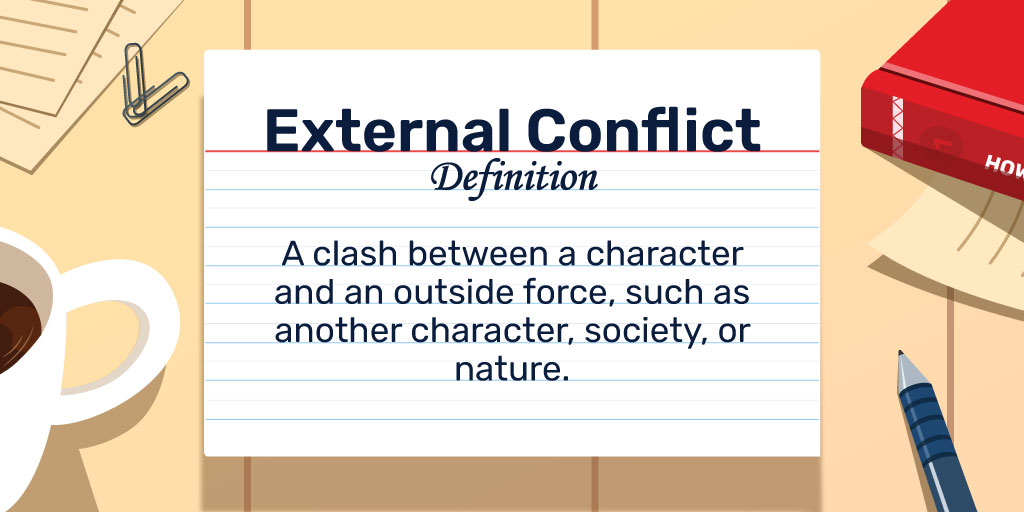
External conflict is one that arises from a character’s struggle against an outside force, such as another character, society, nature, or a supernatural entity. This type of conflict is often used to create tension and suspense in the narrative and is typically resolved through action or confrontation.
Types of External Conflict

When looking at the many external conflicts that you can use to drive tension in your story, we can differentiate them depending on who (or what) the protagonist is confronting. In the sections below, we will look at a few of these antagonists and what kind of conflict might come up from facing them.
Character vs. Character
Character vs. character conflicts arise when the main character struggles against a person or group of people. An antagonist can try to hurt the protagonist, one person can betray another, people with different beliefs can clash, or groups of people can compete for resources.
Character vs. Society
When a character struggles against the norms, expectations, or rules of society, we talk about a character vs. society type of conflict. It can take many forms, from individuals fighting against societal prejudice to larger groups of people rebelling against oppressive systems or institutions. It includes dystopian societies fighting against oppressive governments, and individual people breaking free of social norms.
Character vs. Nature
This type of conflict involves a character struggling against the forces of nature or the environment. It explores the fragility of human life in the face of powerful natural forces and the human drive to survive and overcome adversity. It can be developed in the way of wilderness survival, seafaring, animal attacks, and natural disasters like hurricanes or earthquakes.
Character vs. Supernatural
In a character vs. supernatural conflict, a character battles against supernatural forces or entities. These can be paranormal beings like ghosts, vampires, or zombies; supernatural powers like telekinesis, teleportation, mind-reading, or time travel; religious or mythological entities like angels or demons; and curses and hauntings.
Character vs. Machine
This is a conflict in which the character’s battle against machines or advanced technologies. These can take the shape of robots or artificial intelligence that have become too advanced, oppressive technologies in dystopian societies, or the moral implications of new technologies.
Character vs. Time
Character vs. time is a conflict where a character struggles against the passage of time, often trying to prevent future events or alter past ones. The simplest form is where they race against the clock to accomplish a mission. But authors have been exceptionally creative with this conflict, making the characters age in reverse, and forcing them to live the same day over and over until they make the right decisions.
Character vs. Economy
When a character fights against economic or financial systems, institutions, or individual representatives of them, then they’re involved in this conflict. The most common form is where they struggle against poverty and hardship, but they can also battle greedy corporations who prioritize profit over people or economic systems that perpetuate injustice.
Character vs. Fate
Character vs. fate is a type of conflict where a character struggles against the forces of fate, destiny, or divine intervention. They can struggle against the will of god or the scientifically determined course of events, or they can strive to exert their free will over events that are destined to happen.
Character vs. Law
Conflicts in which a character battles the legal system or authorities are known as charactervs. law conflicts. They may engage in this struggle by battling unfair laws or regulations, dishonest law enforcement, or corrupt political institutions. Literature with this type of conflict at its core explores themes like justice, power, and the limits of authority.
Character vs. Politics
This type of conflict happens when a character struggles against political systems or individuals in power. They can fight against corruption, totalitarianism, censorship, propaganda, surveillance, or populism. Authors take this route to explore themes like power and the ethical implications of political decisions and policies.
Examples of External Conflict
External conflicts are present in almost all stories, so there are plenty to choose from here. Consider the following as illustrative examples:
Nineteen Eighty-Four, by George Orwell
Throughout Nineteen Eighty-Four, Winston Smith is engaged in an external conflict against the oppressive government of Oceania. While it is eventually unsuccessful, much of the book is focussed on his unhappiness with the regime and punishments for opposing it.
Jurassic Park, by Michael Crichton
Both the novel and film revolve around a human vs. nature conflict as the characters fight for their survival in a Pacific island where the park giving its name to the title is set, after the genetically engineered, resurrected dinosaurs that were the main attraction break free and wreak havoc.
Lord of the Flies, by William Golding
In Lord of the Flies, a group of boys are stranded on a deserted island and must fend for themselves. The external conflict arises from the struggle for power and survival among the boys as they attempt to form their own society. The conflict is ultimately resolved through a violent confrontation between the two main factions of the group.
The Handmaid’s Tale, by Margaret Atwood
The novel and TV series feature both human vs. society and human vs. politics conflicts as the protagonist struggles against the oppressive government, its system of female subjugation, and the sexist social norms that exist within her world.
Balancing Internal & External Conflicts
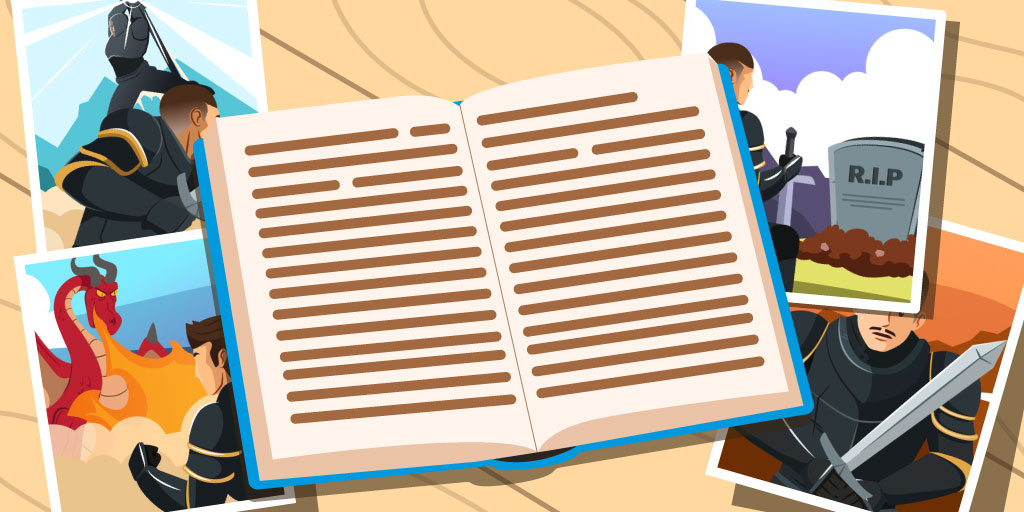
Balancing internal and external conflict is an essential aspect of creating a well-rounded and engaging story. If the ratio swings towards external conflict, then the story is action-packed and exhilarating, but could end up containing only flat characters. If it swings towards internal conflict, then the characters are likable and relatable, but the story might become boring, since there won’t be much interaction with the outside world to develop an engaging action.
So, how should you balance the two so that neither overwhelms the other? The following sections contain some useful tips and suggestions.
Let Conflicts Work Together
Use the two types of conflict to complement each other. The most typical way to do this is to use external conflict to drive the plot and internal conflict to steer the characters.
The external conflict can provide the action and tension needed to drive the plot forward. The internal conflict can be used to add depth and complexity to the character’s motivations for engaging in the external conflict.
Since external conflict is usually built into your plot from the beginning in the form of an inciting incident, to achieve a nice balance between internal and external conflict your story may require you to spend more time constructing deep, complex characters. Accordingly, ask yourself why they see the external conflict as a conflict and why they aren’t just walking away. Consider how various human characteristics lead to different ways of handling your external conflict. Devise some traits that will make the conflict harder for your character.
Connect the Conflicts
If internal and external conflicts are connected, it should be easy to include both in your story. For example, if you are writing a novel about a detective who is investigating a murder case, their external conflict against the perpetrator is already built in.
But authors often give them a trauma conflict in which they struggle with nightmares and flashbacks of a horrible past crime against them. This internal conflict then compromises their ability to investigate the case, since every discovery evokes extreme anxiety and fear of the perpetrator, because, in a way, this creates a link to memories of the villain that harmed them in the past.
In this way, ramping up the external conflict by taking the detective closer to the perpetrator automatically drives the internal conflict to a crescendo where the detective is deeply psychologically impaired.
Use Each to Complicate the Other
Conflicts don’t have to be connected to complicate each other. There are many other ways to do this.
For example, if you write a story about surviving in the wilderness, a self-doubt conflict can complicate the external struggle to survive. A character’s fear of failure or insecurity can cause them to hesitate or make poor decisions, putting them in even greater danger.
Or, in a romantic drama story, the external conflict of a difficult marriage with a cheating partner can complicate an internal emotional conflict in which the character feels both love and hatred towards that person. This can either lead to an eventual resolution of the internal conflict, or it can drive the character to do serious harm to their partner out of hatred.
Make External Conflicts Personal
An external conflict interests your audience only if it happens to someone they care about. In his book On Writing: A Memoir of the Craft, Stephen King spends an almost absurd number of pages talking about the importance of having readers care about the characters before you propel them into a conflict that might kill them.
That is the only way in which conflict and death can have an impact. It makes readers feel personally invested in their journey and deeply distressed when something happens to them.
You make external conflicts personal by constructing deep, complex characters. When you do this, internal conflicts will appear automatically, as they appear in you, your family, your friends, and everyone around us.
Understand Your Genre
While all stories should include both types of conflict, fans of some genres can handle more of one than the other.
For example, action and thriller devotees are happy with stories that are heavier in external conflict, while romance and drama fans can deal with larger amounts of internal conflict.
Pace Conflicts Appropriately
Introduce internal conflict gradually, since too much internal conflict too soon can slow down the pacing and make the story feel weighed down.
Further, alternate scenes of internal and external conflict. This ensures that internal reflections don’t slow down action-packed scenes. It also gives your audience a breather between high-stakes events.
Final Thoughts
Conflict is a fundamental element of storytelling that drives the plot, creates suspense and drama, and keeps readers engaged. Internal conflict is the struggle that characters face within themselves, while external conflict is the battle they face against forces outside themselves.
By balancing internal and external conflict, writers can create complex and compelling characters, as well as a well-paced and engaging plot.
Character Development Quiz (Hard)

